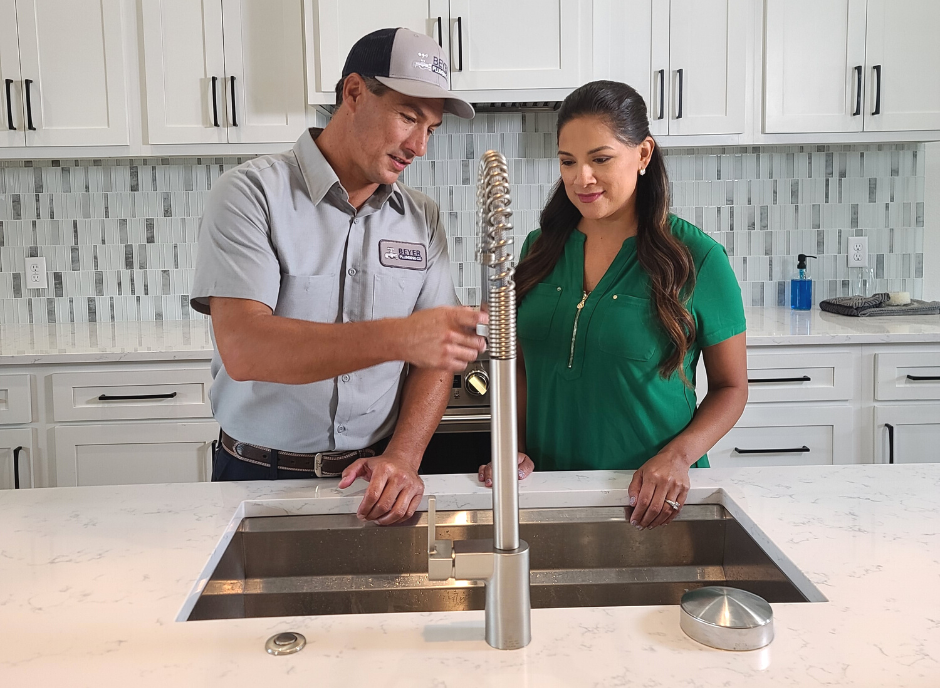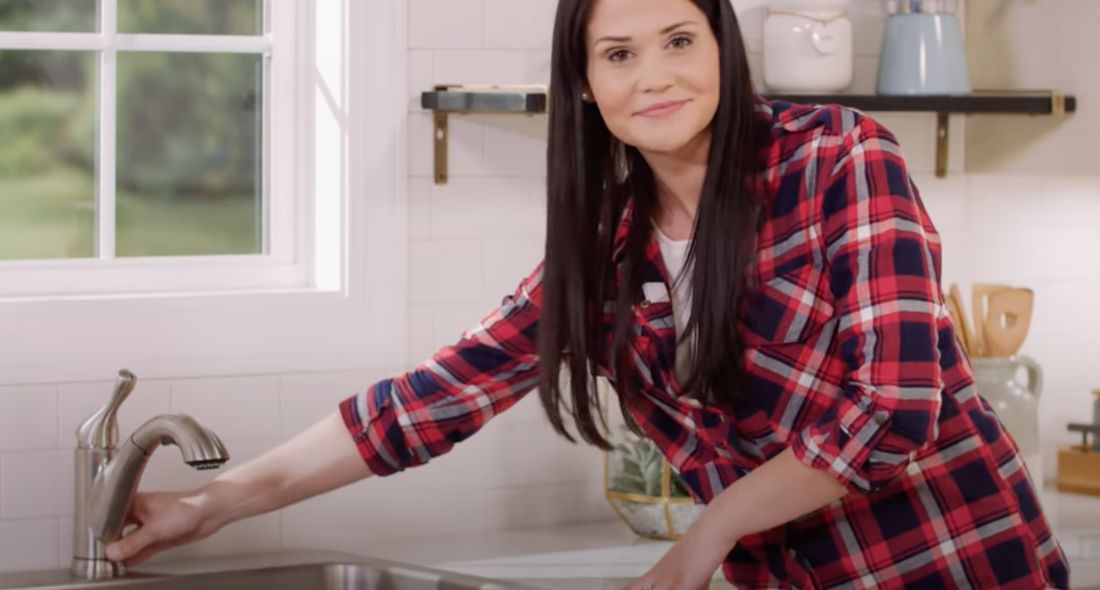Are you on the lookout for information concerning 4 Common Reasons for a Leaky Faucet?

Leaking faucets might feel like a small trouble, yet their influence exceeds just the annoyance of the audio. From wasting water to incurring unneeded monetary costs and wellness dangers, ignoring a dripping tap can result in numerous repercussions. In this article, we'll explore why it's essential to resolve this common family issue quickly and properly.
Wastage of Water
Ecological Effect
Trickling taps contribute substantially to water wastefulness. According to the Environmental Protection Agency (EPA), a single tap trickling at one drip per second can waste greater than 3,000 gallons of water annually. This not only strains water sources but additionally impacts communities and wild animals based on them.
Step-by-Step Overview to Taking Care Of a Dripping Faucet
Tools Called for
Before trying to take care of a dripping tap, collect the required devices, including an adjustable wrench, screwdrivers, replacement parts (such as washers or cartridges), and plumber's tape.
Usual Faucet Issues and Their Solutions
Identify the type of faucet and the specific issue causing the drip. Typical troubles consist of damaged washing machines, rusty valve seats, or faulty O-rings. Describe producer guidelines or online tutorials for step-by-step advice on fixings.
Financial Prices
Enhanced Water Costs
Beyond the ecological impact, trickling faucets can pump up water costs significantly. The gathered wastage with time translates right into greater energy expenses, which might have been prevented with prompt repairs.
Potential Property Damage
Furthermore, extended leaking can lead to harm to components and surfaces bordering the faucet. Water build-up can create staining, deterioration, and even architectural issues if left neglected, resulting in additional fixing expenses.
Health and wellness Problems
Mold and Mold Growth
The continuous presence of moisture from a trickling faucet produces a suitable atmosphere for mold and mildew and mold development. These fungis not only endanger indoor air quality yet likewise pose health threats, especially for people with respiratory problems or allergic reactions.
Waterborne Illness
Stationary water in trickling taps can become a breeding place for bacteria and other microorganisms, raising the danger of waterborne diseases. Contaminants such as Legionella microorganisms grow in stationary water, potentially leading to significant health problems when consumed or breathed in.
DIY vs. Specialist Fixing
Advantages and disadvantages of DIY Repair Work
While some might attempt to take care of a leaking tap themselves, DIY repair services feature their own collection of challenges. Without proper knowledge and tools, DIY attempts can intensify the concern or bring about insufficient fixings, prolonging the trouble.
Benefits of Hiring a Specialist Plumber
Hiring a specialist plumber guarantees that the underlying cause of the leaking tap is attended to effectively. Plumbing professionals have the proficiency and tools to identify and repair faucet problems successfully, conserving time and reducing the danger of more damage.
Environmental Obligation
Specific Payment to Preservation
Taking duty for fixing dripping faucets aligns with broader efforts towards water preservation and environmental sustainability. Every individual's actions jointly make a substantial influence on protecting valuable resources.
Lasting Living Practices
By prioritizing prompt fixings and taking on water-saving practices, individuals add to sustainable living techniques that benefit both present and future generations.
Safety nets
Regular Upkeep Tips
To prevent trickling faucets, carry out regular maintenance such as cleansing aerators, examining for leakages, and replacing damaged components quickly. In addition, consider setting up water-saving tools or upgrading to much more reliable components.
Relevance of Prompt Repairs
Attending to trickling taps as soon as they're discovered stops additional water wastefulness and possible damage, ultimately saving both water and money in the long run.
Influence On Residential Or Commercial Property Value
Perception of Well-Maintained Property
Preserving a property in good condition, consisting of resolving upkeep concerns like leaking taps, enhances its regarded worth and worth amongst potential buyers or lessees.
Impact on Resale Value
Characteristics with properly maintained plumbing fixtures, including faucets, command greater resale values in the property market. Attending to trickling faucets can add to a positive perception throughout residential property inspections and settlements.
Verdict
Dealing with a leaking tap goes beyond mere comfort; it's a crucial step toward preserving water, reducing financial costs, and protecting health and wellness and building. Whether via do it yourself fixings or specialist aid, doing something about it to deal with trickling taps is a little yet impactful way to promote responsible stewardship of sources and add to a healthier, more lasting future.
How to Fix a Dripping or Leaky Faucet
A leaking faucet is one of the most common problems that homeowners encounter, but it being commonplace doesn’t make it any less annoying. The constant drip drip drip of a leaking bathtub faucet, showerhead, or sink tap can disturb your home’s serenity. Left neglected, a dripping faucet can also result in higher water bills and discoloration or mold growth in your sink or plumbing fixtures.
Fortunately, you don’t have to be a trained plumber to know how to stop a dripping faucet. With some basic tools, replacement parts, and a little patience, leaky faucet repair is a breeze. In this article, we’ll explain what causes dripping faucets and how you can fix them.
What Causes a Leaking Faucet?
Kitchen and bathroom faucets come in all manner of designs, but most involve some combination of valves, O-rings, seals, and washers. The O-ring is usually the weakest link, but any one of these pieces can wear down over time. Heat, moisture, temperature fluctuations, minerals, mold, and movement can contribute to warping and corrosion, breaking the watertight seal. This just comes with the territory of being a homeowner. Everything is always subject to wear and tear, and some component parts of your appliances and fixtures need to be replaced on occasion. At least replacement O-rings are cheap!
More rarely, dripping faucets can be a symptom of excessively high water pressure. Were this the case in your home, you would probably notice that the leak is not isolated to one faucet. Water pressure issues are harder to resolve on your own. We recommend contacting a professional plumber if you suspect your water pressure is too high.
How to Fix a Dripping Faucet
Pipe wrench or monkey wrench Allen wrench set Screwdrivers Old towel or rag Shut off the water.
Before you do anything, you need to turn off the water to keep from drenching your kitchen or bathroom. You should find a valve under the sink and against the wall. Once you’ve turned this valve, try turning the faucet on to confirm that the water source has been cut off.
If you can’t locate your local valve for the faucet you’re working on, you can always shut off the water to the house at the main valve. Of course, this will prohibit anyone from using the sinks, showers, or toilets while you’re working on the faucet that’s giving you trouble.
Plug or block the drain.
You’ll be disassembling the faucet and removing some small bits of hardware. Plug the drain with a stopper or rag to avoid the possibility of a small screw falling into your P-trap.
Take apart the faucet assembly.
There are several varieties of kitchen and bathroom faucets, each with its own manner of assembly. For detailed instructions on how to disassemble your faucet, you can refer to the fixture’s manual or contact the manufacturer. If you know whether you have a ball, disc, cartridge, or compression faucet, you can find detailed schematics online.
In general, you need to begin by removing the faucet handles. You might notice a small screw that you’ll need to remove with a screwdriver or Allen wrench. If you don’t see any visible securing hardware, it’s likely hidden under a decorative cap that can be unscrewed or popped off with flathead screwdriver.
Remove each piece methodically, consulting a schematic when necessary. Take notes or arrange the pieces in such a way to make it easier to correctly reassemble the faucet later.
Remove the cartridge.
Once you’ve removed the handles and securing hardware, you should be able to remove the valve cartridge or stem. Some cartridges will slide right out. Other faucet models will require you to loosen a nut with a pipe wrench before you can remove the valve stem.
Examine the exposed hardware.
With the cartridge or stem removed, inspect the component parts. Check the rubber O-rings for wear and tear. Also examine the seat washer for corrosion or other damage. These pieces are usually the responsible parties for a dripping faucet, but it’s worth inspecting the other component parts while you have the faucet disassembled.
Find replacement parts.
Once you’ve identified which faucet component has failed, find an identical replacement. Your local hardware store should have O-rings, seat washers, and other standard components in stock. If you have a luxury or uncommon faucet, you may have to contact the manufacturer for a replacement part.
It’s a good idea to take your old parts with you to the hardware store so you can compare them with the store’s inventory and be sure you’re purchasing the correct replacement.
Reassemble the faucet.
With your new parts in hand, reconstruct the faucet and handles. Don’t be tempted to overtighten screws or nuts. You might think this could create a better seal, but it can instead damage or bend a delicate part of the assembly and create a new problem for you.
Turn on the water and test the faucet.
The only thing left to do is test your work. Unplug the sink, turn the water back on, and try the faucet. Congratulate yourself on a job well done!
https://www.libertyhomeguard.com/how-to-fix-a-dripping-or-leaky-faucet/

I was shown that write-up about Should I Repair or Replace a Leaky Faucet? from someone on our other web property. Sharing is good. Helping people is fun. We thank you for reading our article about Water Dripping from Faucet: Why and How to Fix.